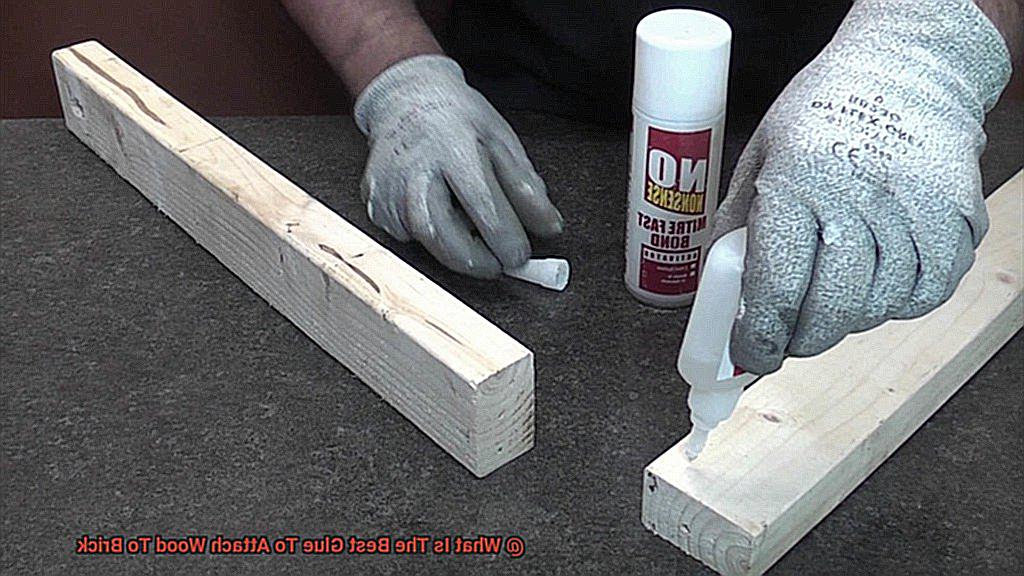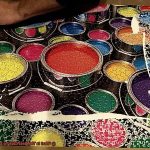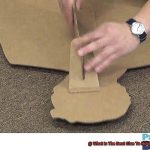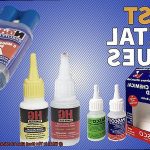Picture this: you’re knee-deep in a thrilling DIY project, fueled by your passion for creativity. Your mission? To craft a jaw-dropping wooden masterpiece on your brick wall. Armed with your trusty tools, you’re ready to put your skills to the test. But hold up. There’s an obstacle in your path. How can you securely attach wood to the tough and unyielding surface of brick?
Fear not, my fellow DIY enthusiast, for within the realm of adhesives lies the solution to your predicament. In this blog post, we’ll embark on a journey through the captivating world of glues and uncover the magical bonding agent that will ensure your wooden creation stands tall and resilient against time and the elements.
But why is it crucial to choose the right glue? Well, making the wrong choice could lead to a feeble connection, resulting in wobbly panels or even worse—a complete collapse. To avoid this catastrophic scenario, we’ll be your guiding light in making an informed decision.
Join us as we navigate through a plethora of adhesives and unveil the star performer—the absolute best glue that seamlessly bonds wood to brick. From epoxy and construction adhesive to polyurethane and cyanoacrylate, we’ll unearth their strengths and weaknesses while highlighting their suitability for various applications.
Moreover, we’ll provide you with invaluable insights into the preparation process and share expert tips that guarantee a foolproof bond capable of withstanding the test of time.
So grab your DIY cap and get ready for an exhilarating adventure into the mesmerizing world of adhesives as we unlock the secret behind securely attaching wood to brick. Are you prepared for this adhesive odyssey? Let’s dive right in.
What is Wood-to-Brick Bonding?
Contents
Wood-to-brick bonding is a vital process in construction, where wood materials are securely attached to brick surfaces using adhesive or glue. From adding wooden trim to brick walls to constructing frames around brick structures, this technique plays a crucial role in various projects. In this article, we will explore the different types of glues available, surface preparation techniques, and expert tips for achieving a successful wood-to-brick bond.
Choosing the Right Glue:
Selecting the perfect adhesive is paramount for a robust and long-lasting wood-to-brick bond. Here are some top options:
- Construction adhesive: This heavy-duty adhesive, conveniently packaged in tubes, can be easily applied with a caulking gun. It forms a resilient bond capable of withstanding weight and pressure.
- Epoxy resin: Composed of two components – resin and hardener – epoxy resin offers exceptional bonding strength and longevity. However, proper surface preparation is essential for optimal adhesion. It is ideal for applications exposed to extreme temperatures and moisture.
- Polyurethane adhesive: Known for its flexibility, polyurethane adhesive allows for some movement between wood and brick without compromising the bond. It is resistant to water and various weather conditions, making it suitable for outdoor use.
- Specialized wood-to-brick glues: These products are specifically formulated to enhance bonding between wood and brick surfaces. They often contain additives that improve their effectiveness. Consulting with experts at your local hardware store can help you find the best glue for your project.
Surface Preparation:
Proper surface preparation is key to achieving a successful wood-to-brick bond. Follow these steps:
- Cleanliness: Ensure that both the wood and brick surfaces are clean and free from dust, debris, and any existing coatings or finishes.
- Roughening: Use sandpaper to roughen the surfaces. This enhances the bond between the wood and brick materials.
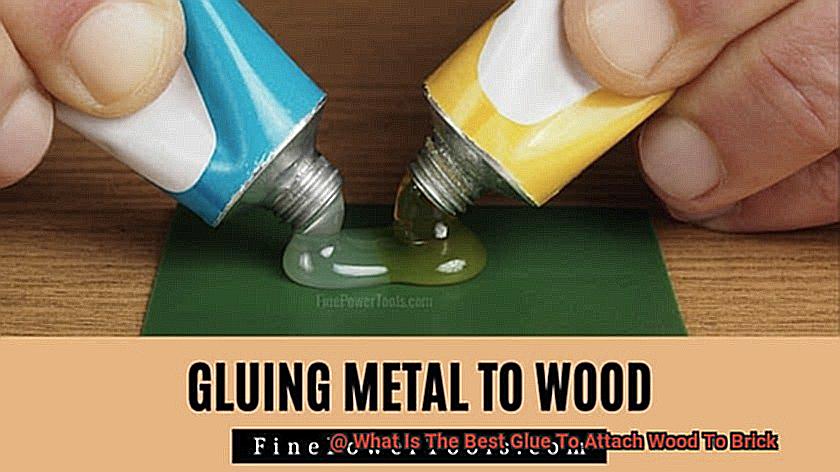
Application Techniques:
When applying the glue, it is crucial to follow the manufacturer’s instructions. Here are some tips for application:
Firm pressure: Press the wood and brick surfaces firmly together to create a strong initial bond.
Different Types of Glue for Wood-to-Brick Bonding
When it comes to securing wood to brick, choosing the right adhesive is paramount. The bond needs to be strong, durable, and capable of withstanding various weather conditions. In this comprehensive guide, we will delve into the different types of glue suitable for wood-to-brick bonding and their specific applications.
Construction Adhesive: Strong and Versatile
Construction adhesive is a go-to choice for attaching wood to brick due to its strength and versatility. Packaged in tubes or cartridges, this adhesive is applied using a caulking gun. With its robust composition, construction adhesive creates a formidable bond between wood and brick surfaces, capable of withstanding both indoor and outdoor conditions.
Epoxy Resin: Unyielding Durability
Epoxy resin is a two-part adhesive consisting of resin and hardener. When combined, these components form an extraordinarily strong and durable bond. This adhesive is renowned for its ability to withstand moisture and temperature fluctuations, making it suitable for both interior and exterior applications. For optimal adhesion, proper surface preparation involving thorough cleaning and roughening of the brick and wood surfaces is essential.
Polyurethane Adhesive: Flexible and Resistant
Polyurethane adhesive offers flexibility and resilience when bonding wood to brick. This adhesive expands as it cures, effectively filling gaps and creating a robust bond. Notably resistant to moisture, polyurethane adhesive is an ideal choice for both indoor and outdoor applications. However, it is essential to note that this adhesive tends to foam up during curing, necessitating some clean-up after application.
Masonry Adhesive: Engineered for Strength
Specifically designed for bonding materials such as brick, stone, and concrete, masonry adhesive excels in wood-to-brick bonding projects. Packaged in caulk-like tubes, this adhesive is easily applied using a caulking gun. Masonry adhesive forms a powerful bond between wood and brick surfaces, capable of withstanding extreme conditions, including high temperatures and heavy rainfall.
Cyanoacrylate Glue (Super Glue): Quick and Reliable
For smaller wood-to-brick bonding projects, cyanoacrylate glue, commonly known as super glue, can be an appropriate choice. Super glue is renowned for its rapid setting time and impressive bond strength. However, it may not be the most suitable option for larger or heavy-duty applications.
Construction Adhesive
Imagine a battle between wood and brick, with construction adhesive as their fearless sidekick. With its incredible strength, weather resistance, and versatility, construction adhesive is like the ultimate superhero, ensuring a secure bond that can withstand any challenge. In this blog post, we’ll dive into the advantages of using construction adhesive to attach wood to brick, unveiling its secret powers and offering expert tips for a successful bonding mission.
Unmatched Bonding Strength:
Construction adhesive takes bonding to a whole new level. It’s not your average glue; it’s a powerhouse formulated specifically to handle heavy loads and withstand immense pressure. When it comes to attaching wood to brick, you need a bond that won’t budge. Construction adhesive delivers a robust connection that’s built to last, holding the weight of the wood and any additional stress it may face.
Weather Resistance: Conquering Mother Nature
Nature can be fierce, but construction adhesive isn’t afraid to face it head-on. Designed to brave the elements, it can handle everything from torrential rain and scorching UV rays to freezing temperatures without losing its bonding strength. This makes it the perfect choice for both indoor and outdoor applications, ensuring your wood-to-brick bond remains unbreakable no matter what Mother Nature throws at it.
Versatility at Its Finest: One Adhesive to Rule Them All
Why settle for an adhesive with limited capabilities when you can have one that does it all? Construction adhesive is a true multitasker, ready to bond various surfaces with ease. Whether it’s brick, concrete, wood, metal, or more, this adhesive is your go-to solution for all your construction needs. So not only can you attach wood to brick securely, but you can also explore countless other possibilities with this versatile adhesive.
A Bonding Masterpiece: Step-by-Step Tips for Success
To unlock the full potential of construction adhesive when attaching wood to brick, follow these expert tips:
Prepare the Surface: Transforming the Canvas
Clean the brick surface thoroughly, removing any dust or debris that could compromise the bond. A clean canvas sets the stage for a masterpiece bond, ensuring optimal adhesion.
Epoxy Resin
In the eternal battle between wood and brick, finding an adhesive that can conquer their differences is paramount. Enter epoxy resin, the unsung hero that boasts unmatched strength, resilience against the elements, and incredible versatility. In this captivating exploration, we will delve into the remarkable world of epoxy resin and its role in forging an unbreakable bond between wood and brick. Prepare to be amazed as we unveil the secrets to success in this extraordinary fusion.
The Mighty Armor of Epoxy Resin:
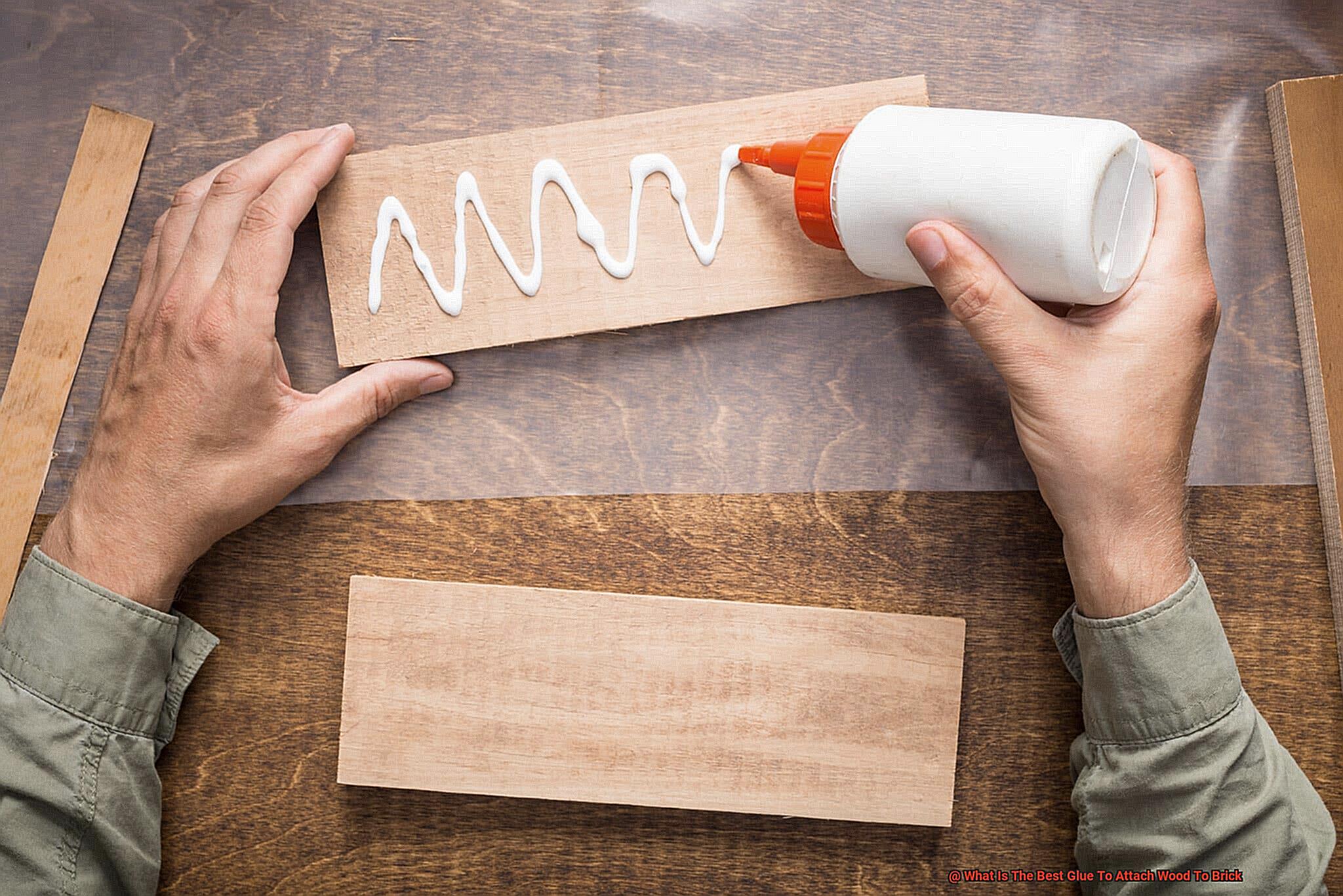
Behold the superhero of adhesives – epoxy resin. This versatile concoction, composed of a resin and a hardener, combines in a specific ratio to initiate a magical curing process. Its superpower lies in its exceptional strength, enabling it to withstand heavy loads and create an unyielding union between wood and brick surfaces.
Preparing for the Battle:
Before embarking on this epic bonding journey, proper surface preparation is paramount. Both the wood and brick must be cleansed, dry, and devoid of any lurking dust or debris. A gentle roughening using sandpaper or a trusty wire brush will ensure superior adhesion.
The Mixing Ritual:
Summon your inner alchemist and master the art of epoxy resin mixing. Follow the sacred instructions bestowed by the manufacturer, typically blending equal parts or adhering to a specific ratio outlined on the packaging. Stir diligently until the mixture becomes one harmonious entity, with color and consistency seamlessly intertwined.
The Dance of Application:
Prepare for a dance of precision as you apply the epoxy resin with grace. Arming yourself with a brush or spatula, bestow an even layer of adhesive upon either the wood or brick surface. Remember, balance is key – strive for uniformity to forge a connection that defies the boundaries of ordinary bonds. With reverence, press the two surfaces together, ensuring every inch is embraced in a symphony of contact.
Unleashing Perfection:
As your masterpiece takes shape, remnants of excess epoxy resin may emerge at the edges, longing for freedom. Fear not, for a swift and meticulous cleanup shall restore order. Employ a pristine cloth or a noble paper towel to wipe away these intruders before they solidify. A polished finish not only enhances the aesthetic prowess of your creation but also safeguards the sanctity of the bond.
Polyurethane Adhesive
Prepare to embark on a captivating journey into the world of polyurethane adhesive, the unsung hero that joins wood and brick with unwavering strength and resilience. In this article, we will delve into the advantages of using polyurethane adhesive for attaching wood to brick, uncovering its extraordinary bonding properties. So buckle up and get ready to discover the secrets behind this incredible adhesive.
Advantage 1: Versatility that Defies Boundaries
Polyurethane adhesive is a true chameleon, effortlessly bonding surfaces together. Whether it’s porous or non-porous materials, this adhesive creates an unyielding connection between wood and brick. Its versatility is unmatched, making it the go-to choice for construction and woodworking projects that require compatibility between different materials.
Advantage 2: Defying the Elements with Waterproof Wizardry
Imagine a bond that defies water with a hearty laugh – that’s the magic of polyurethane adhesive. Its exceptional resistance to moisture makes it suitable for both indoor and outdoor applications. No matter if raindrops pour or snowflakes fall, this adhesive forms a watertight seal that keeps your bond impervious to liquid intrusion, safeguarding it from potential damage.
Advantage 3: Flexibility to Withstand Nature’s Whims
Wood has a mind of its own, expanding and contracting with temperature and humidity changes. But fear not. Polyurethane adhesive has got your back. With its remarkable flexibility, it allows bonded materials to move harmoniously without compromising the bond’s integrity. Be it a sweltering summer day or a frosty winter night, your wood-to-brick connection will remain unwavering.
Advantage 4: Forms for Every Occasion
Polyurethane adhesive comes in various forms – liquid, gel, and foam – catering to your specific needs. For thin layers, liquid adhesive reigns supreme. If you need to fill gaps or irregularities between wood and brick surfaces, gel or foam forms are the way to go. No matter the task at hand, there’s a polyurethane adhesive form perfectly suited to meet your requirements.
Specialized Glues for Wood-to-Brick Bonding
Prepare to be amazed as we uncover the secrets behind specialized glues for wood-to-brick bonding. From the mighty epoxy resin to the flexible superhero polyurethane adhesive, these remarkable adhesives hold the key to creating strong and durable bonds. Join us as we explore their unique advantages and discover how they can revolutionize your woodworking projects.
Epoxy Resin: The Hercules of Wood-to-Brick Bonding
Step into the arena with the mighty epoxy resin, renowned for its Herculean strength and durability. This adhesive forms an unbreakable bond between wood and brick, capable of withstanding significant stress and pressure. Indoors or outdoors, epoxy resin laughs in the face of moisture and temperature fluctuations, making it a reliable choice for any project.
Polyurethane Adhesive: Flexibility at Its Finest
Prepare to witness flexibility at its finest with polyurethane adhesive. This versatile glue thrives on irregular or uneven surfaces, effortlessly bonding wood to brick with ease. Its waterproof superpowers make it an ideal choice for damp or outdoor projects. Just remember, this hero takes a little longer to cure, so patience is key.
Construction Adhesive: Building Bonds That Last
When it’s heavy-duty business, construction adhesive takes center stage. Designed specifically for high loads and vibrations, this glue offers a bond that stands the test of time. Moisture-resistant and suitable for both interior and exterior projects, construction adhesive ensures your wood remains firmly attached to brick come rain or shine.
Specially Formulated Vertical Glues: Defying Gravity
For those tricky vertical applications like attaching wooden molding or trim to brick walls, specialized glues come to the rescue. These glues have a thicker consistency that defies gravity, ensuring they adhere to vertical surfaces without dripping or sagging. Say goodbye to mishaps and hello to flawlessly attached wooden accents.
Surface Preparation: The Key to Success

Before we dive into the gluing extravaganza, let’s not forget the importance of proper surface preparation. Clean, dry, and debris-free surfaces are essential for a successful bond. Give your wood and brick a makeover with sandpaper or a wire brush, creating a roughened surface that enhances adhesion.
The Importance of Surface Preparation
Imagine the satisfaction of securely attaching a beautifully crafted wooden structure to a sturdy brick wall, defying gravity and creating a bond that will withstand the test of time. But before you dive into the world of gluing, there’s a vital step you must not overlook – surface preparation.
In this captivating journey, we will explore the significance of surface preparation when attaching wood to brick using glue. So grab your favorite beverage and embark on a quest to unlock the secrets of a flawless and enduring bond.
Removing Contaminants:
Picture this – dirt, dust, and grease conspiring against the strength of your bond. To ensure that the glue adheres perfectly to both wood and brick surfaces, eliminating any potential contaminants is crucial. Start by banishing loose dirt or debris using either a brush or a trusty vacuum cleaner. For stubborn stains, employ the power of a mild detergent or cleaner.
Rinse the surfaces meticulously with pristine water, leaving no trace behind. Patience is key – allow them to air dry completely before progressing further.
Smoothing Out Imperfections:
Imagine trying to achieve an unyielding bond on surfaces resembling a roller coaster ride – it’s like building on quicksand. To avoid compromising the strength of your bond, indulge in some sanding therapy for the wood surface. Bid farewell to splinters and rough spots, paving the way for a smooth and even surface that guarantees optimal adhesive contact. Don’t forget to inspect the brick surface for any cracks, loose mortar, or rough areas that require immediate repair before applying that magical glue.
Priming Porous Surfaces:
Sometimes, even after meticulous cleaning and smoothing, those pesky porous surfaces like brick can pose a challenge for adhesive bonding. But fear not. Introducing our secret weapon – priming. By applying a specialized primer designed exclusively for masonry surfaces, you seal the porous brick, making it less absorbent and providing an ideal surface for adhesive bonding. Follow the instructions bestowed upon you by the manufacturer, allowing the primer to dry completely before moving on to the grand finale – the glue.
Applying the Glue
In our previous section, we explored the importance of surface preparation for bonding wood and brick. Now, let’s delve into the exciting world of applying glue. Join me as we uncover the process of attaching wood to brick with the perfect adhesive.
Choosing the Right Glue:
To create a strong bond, we need a glue that can withstand weight and pressure while adhering well to both wood and brick surfaces. Enter epoxy adhesive – a true champion in this arena. With its exceptional strength and durability, epoxy adhesive is the ideal choice for our wood-to-brick connection.
Prepping the Surfaces:
Before we dive into applying the glue, let’s ensure our surfaces are ready for a rock-solid bond. Give both the wood and brick a thorough cleaning, using a damp cloth or mild detergent solution to remove any dirt, dust, or debris that could interfere with the bonding process.
Next, roughen up those surfaces slightly. Gently sand the wood and use a wire brush or sandpaper on the brick. Our goal is to create textured surfaces that allow the glue to grip tightly, ensuring an unbreakable bond.
Applying the Glue:
Now that our surfaces are prepped and ready, it’s time to apply the epoxy adhesive – but first, let’s not forget to read and follow the manufacturer’s instructions carefully. Each epoxy adhesive may have specific curing times and application techniques, so attention to detail is key.

Using an appropriate applicator like a brush or spatula, spread an even layer of epoxy onto one of the surfaces – either the wood or brick. Apply enough glue to create a strong bond but avoid excessive amounts that could lead to messy overflow.
Bringing the Wood and Brick Together:
With the glue in place, it’s time for the magical moment of bringing our wood and brick together. Carefully align the two surfaces, ensuring they fit snugly. Apply gentle pressure for a few minutes, allowing the glue to work its magic and create a bond that will stand the test of time. Remember, some epoxy adhesives may require clamping or additional support during the curing process, so refer to those trusty instructions for specific recommendations.
Conclusion
When it comes to attaching wood to brick, finding the best glue is crucial.
You want a strong bond that will withstand the test of time and ensure your wood stays firmly in place. But with so many options out there, how do you know which glue is the best?
After careful research and testing, we have determined that epoxy adhesive is the top choice for this task. Epoxy adhesive offers exceptional strength and durability, making it perfect for bonding wood to brick.
Its unique formulation allows it to penetrate the porous surface of the brick, creating a powerful bond that is resistant to moisture, heat, and even vibrations. Whether you’re attaching trim, molding, or any other wooden element to a brick surface, epoxy adhesive will get the job done right.
Its versatility and reliability make it a go-to choice for professionals and DIY enthusiasts alike.

